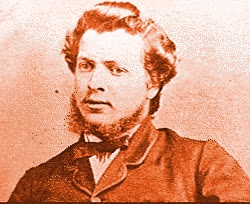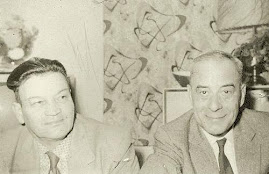April 24, 2009 – Indigenous Leaders celebrated a highly successful 3rd Indigenous Leaders Summit of the Americas (3rd ILSA) in Panama City, held on April 14th to 15th, 2009. Approximately 120 leaders representing Indigenous Peoples from across the Americas, including youth and women, met and issued a Declaration and Plan of Action addressing the theme “Implementing the Rights of Indigenous Peoples of the Americas for Present and Future Generations.” The co-chairs of the 3rd ILSA Summit were Native Women’s Association of Canada (NWAC) President Beverley Jacobs, Grand Chief Edward John (representing the Assembly of First Nations) and Panamanian Indigenous leader with the Kuna General Congress Héctor Huertas.
The Declaration set out the vision for the advancement of the human rights of Indigenous Peoples throughout the Americas, including self-determination; rights related to lands, territories, waters, and natural resources; the protection of traditional knowledge and intellectual property; Indigenous women’s and youth rights to participate on an equal basis and many others. The Plan of Action sets out concrete activities for realizing these rights and making a difference in the lives of Indigenous Peoples throughout the hemisphere that require strong partnerships with member states of the Organization of American States (OAS).NWAC President Beverley Jacobs noted that, “The energy of the 3rd Indigenous Leaders Summit of the Americas highlights the commitment of Indigenous Peoples to overcome the past and present challenges and to secure a future where sustainable ways of living are promoted and protected and socio-economic conditions are improved. Through this vision, Indigenous Peoples truly enjoy human rights recognized in the UN Declaration on the Rights of Indigenous Peoples as well as many other international laws and standards.”
Unfortunately, the environment at the V Summit of the Americas was not one that facilitated the critical development of partnerships with States. Rather, the delegation of Indigenous leaders experienced exclusion. Despite numerous requests by the leaders to attend the State Summit, no such invitation was extended by any government. Nor was it possible for the Indigenous Peoples to participate in the Civil Society Summit or other parallel summits leading into the V Summit because the government of Trinidad and Tobago would not accommodate the 3rd ILSA on site. The result was that the Indigenous leaders, representing millions of Indigenous Peoples from across the Americas, were not even considered “delegates” unlike members of civil society, youth, business and private sector delegates. Further, a last minute decision by the National Secretariat to increase the number of delegates from civil society from 10 to 40 individuals in the Forum with Ministers was not extended to Indigenous Peoples.
At a substantive level, this exclusionary attitude is also reflected. The V States Summit Declaration of Commitment fails to address Indigenous Peoples, despite the theme “Securing our Citizens’ Future by Promoting Human Prosperity, Energy Security and Environmental Sustainability.” Initially, there were three brief references to Indigenous Peoples in the area of health, education and the draft American Declaration on the Rights of Indigenous Peoples. In the final Declaration of Commitment, only two paragraphs refer to Indigenous Peoples, one which supports “voluntary” corporate social responsibility best practices, involving dialogues between the corporate sector, governments and Indigenous “groups”, and one that commits to the adoption of the American Declaration on the Rights of Indigenous Peoples.
Speaking about the process and the State Summit Declaration, Grand Chief Edward John voiced his disappointment: “We saw the V Summit as an opportunity to work in partnership with States of the Americas for the betterment of our people and securing a future where Indigenous Peoples are treated with respect and equality. But if our experience at the V Summit is any indication of the States’ intentions, we have a long way to go. Indeed, the V Summit represents a step backwards for recognition of Indigenous Peoples. At the IV State Summit in Mar del Plata in 2005, Indigenous Leaders were given the respect we deserve and had an opportunity to speak directly to Heads of States.”
The efforts of Indigenous Peoples to create a less discriminatory world for their communities will not be waylaid by this recent step backward. We, the Indigenous Peoples of the Americas, suffer persecution due to the fact that we are Indigenous. This persecution includes murder, displacement, and violations of our human rights by States. As pointed out by the Co-Chair (3rd ILSA) Héctor Huertas, Indigenous leader from Panama, "We have a clear vision of the path to follow and we will continue meeting with the OAS and its Member States in order to ensure that they comply with their international obligations in relation to Indigenous rights and their implementation in these American States. We will be vigilant that the VI Summit be a space to measure the true fulfillment of the States’ commitment against violence and discrimination towards Indigenous peoples.”
-30-
These co-chairs can be contacted through the following media:
Joshua Kirkey, Communications Advisor
Native Women’s Association of Canada
(613) 722-3033 ext. 231, mobile: (613) 290-5680
E-mail: jkirkey@nwac-hq.org.
Gina Cosentino, Government Relations
National Chief’s Office, Assembly of First Nations
613-241-6789 ext. 356
gcosentino@afn.ca.





No comments:
Post a Comment